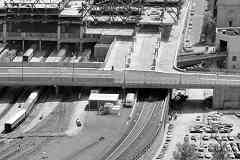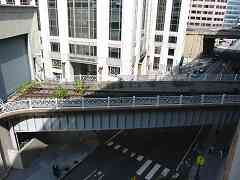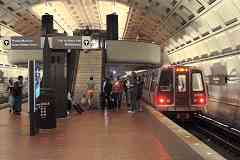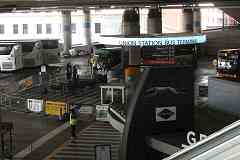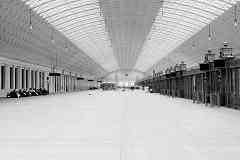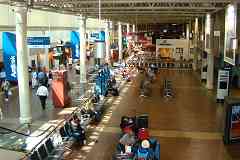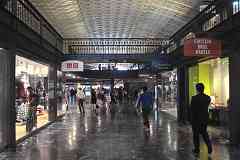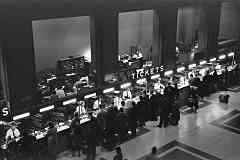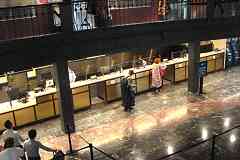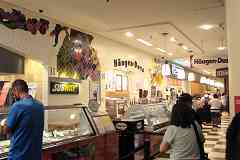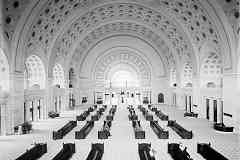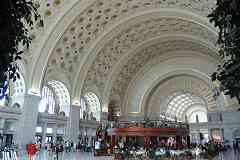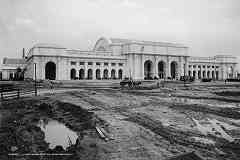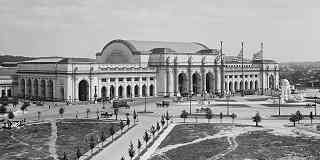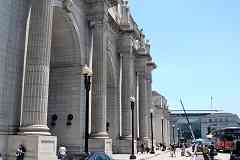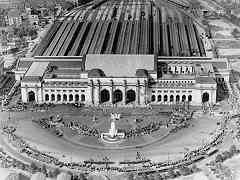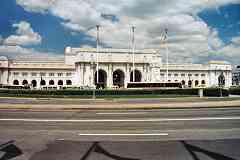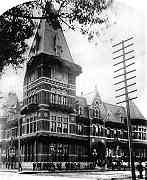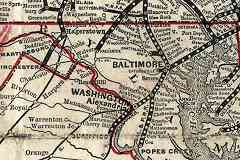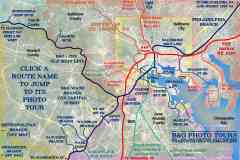|
The vast rear concourse was found at the gates. Why is there not more
seating for waiting passengers? Perhaps outgoing passengers were not
permitted here until their train was ready, at which time they proceeded
directly through to board.
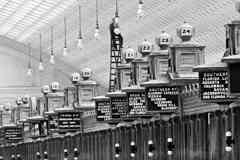 Represented via gate signage are the Pennsylvania RR, Chesapeake and
Ohio, Washington Southern, and the Southern. B&O is not represented,
but did serve the station. Now, LED lamp endurance means fewer trips up
and down tall ladders to replace burned out bulbs, as at right.
Represented via gate signage are the Pennsylvania RR, Chesapeake and
Ohio, Washington Southern, and the Southern. B&O is not represented,
but did serve the station. Now, LED lamp endurance means fewer trips up
and down tall ladders to replace burned out bulbs, as at right.
Washington Southern was formed by a merger of Alexandria and Fredericksburg
Railway with Potomac Railroad, and during 1920 it merged into the Richmond,
Fredericksburg and Potomac Railroad.
Links:
reverse view 1910,
1921,
1928,
buy a new car 1938,
1942,
100,000 one day 1944
|
